Borghi abbandonati in Liguria: cronache da un territorio fragile
Abstract
In Liguria il problema dei centri minori e dei borghi abbandonati è attualmente in crescita. Ciò ha molteplici ragioni, una delle quali potrebbe essere collegata alle particolari caratteristiche e condizioni del territorio. Lo studio si basa su un’analisi del territorio, naturale e antropizzato, eseguita con l’obiettivo di verificare se le condizioni territoriali, unite all’abuso e allo sfruttamento operato dall’uomo, possano essere annoverate tra le principali cause di abbandono. La Liguria, per le caratteristiche geo-morfologiche e geo-idrologiche, è esposta a fenomeni naturali che possono diventare pericolosi per persone e cose, tanto che la storia della regione è costellata di eventi parossistici che, nel tempo, hanno causato ingenti danni e numerose vittime. Fenomeni naturali pericolosi ricorrenti riguardano tutte e quattro le province liguri, anche se con intensità e cinetica diverse. I movimenti franosi sono fenomeni molto diffusi, come dimostrato dal PRIN 2015, Protecting the Cultural Heritage from water-soil interaction related threats. Lo studio del territorio, a partire dall’Atlante dei centri instabili della regione (2001-2007) e dalle Mappe di pericolosità relative a fenomeni gravitativi (2018), evidenzia problematiche territoriali importanti alle quali numerosi centri e borghi liguri non riescono a sottrarsi. Tuttavia, l’analisi dello stato di conservazione e d’uso dei centri minori coinvolti non sembra evidenziare un nesso stretto tra causa ambientale e abbandono. Il parallelo studio della fragilità territoriale e dei centri abbandonati della Liguria riserva, infatti, alcune sorprese. Non è sufficiente un territorio naturalmente instabile per determinare l’abbandono dei piccoli centri, che appare sempre provocato da attività e scelte umane spesso condotte in modo poco lungimirante, per non dire dissennato, soprattutto nell’ultimo secolo.
Abandoned villages in Liguria: chronicles of a fragile area
In Liguria, the problem of abandoned minor towns and villages has long been present. There are many reasons behind this, one of which could be the specific characteristics and conditions of the land. This study is based on an analysis of both natural and man-made territories, and is carried out with the aim of verifying if the condition of the land can be listed among the main causes for its abandonment, together with the exploitation and abuse of the land caused by man. Due to its geomorphological and geo-hydrological characteristics, Liguria is exposed to recurring dangerous natural phenomena that affect all four provinces in Liguria even if with differing degrees of intensity. Landslides are extremely diffused phenomena, as demonstrated by PRIN 2015, Protecting the Cultural Heritage from water-soil interaction related threats. Studying the area, starting from the Map of the region’s unstable zones (2001-2007) and Maps documenting the danger of gravity-driven phenomena (2018), significant issues regarding the land are highlighted, which inevitably affect several towns and villages in Liguria. However, analysis of the conservation state and the general use of the minor towns involved does not seem to show a close connection between abandonment and these natural causes. A naturally unstable territory is not enough to cause the abandonment of small towns, which actually seems to be the result of instability caused by human action alone – often carried out with an improvident, even foolish approach, especially in the last century.
Parole chiave
Full Text
PDFDOI: https://doi.org/10.14633/AHR222
Refback
- Non ci sono refbacks, per ora.
Copyright (c) 2020 Rita Vecchiattini

This work is licensed under a Creative Commons Attribution-NonCommercial 4.0 International License.
........................................................................................................................................................................................................................................................................................................................................................
ArcHistoR è una rivista open access e peer reviewed (double blind), di Storia dell’architettura e Restauro, pubblicata con cadenza semestrale dall'Università Mediterranea di Reggio Calabria (Laboratorio CROSS - Storia dell'architettura e Restauro, dAeD - Dipartimento di Architettura e Design).
ISSN 2384-8898
![]()

Comitato scientifico internazionale
Maria Dolores Antigüedad del Castillo-Olivares, Monica Butzek, Jean-François Cabestan, Alicia Cámara Muñoz, David Friedman, Alexandre Gady, Jörg Garms, Miles Glenndinning, Mark Wilson Jones, Loughlin Kealy, Paulo Lourenço, David Marshall, Werner Oechslin, José Luis Sancho, Dmitrij O. Švidkovskij
Comitato direttivo
Tommaso Manfredi (direttore responsabile), Giuseppina Scamardì (direttrice editoriale), Antonello Alici, Salvatore Di Liello, Fabrizio Di Marco, Paolo Faccio, Mariacristina Giambruno, Bruno Mussari, Annunziata Maria Oteri, Francesca Passalacqua, Edoardo Piccoli, Renata Prescia, Nino Sulfaro, Fabio Todesco, Guglielmo Villa
 .
. 


2.jpg)
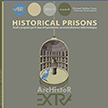
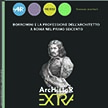
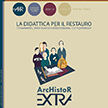

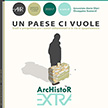
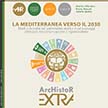
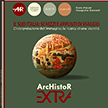
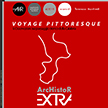
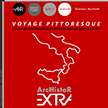
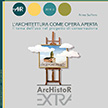

_2.jpg) .
. 
 .
. 

